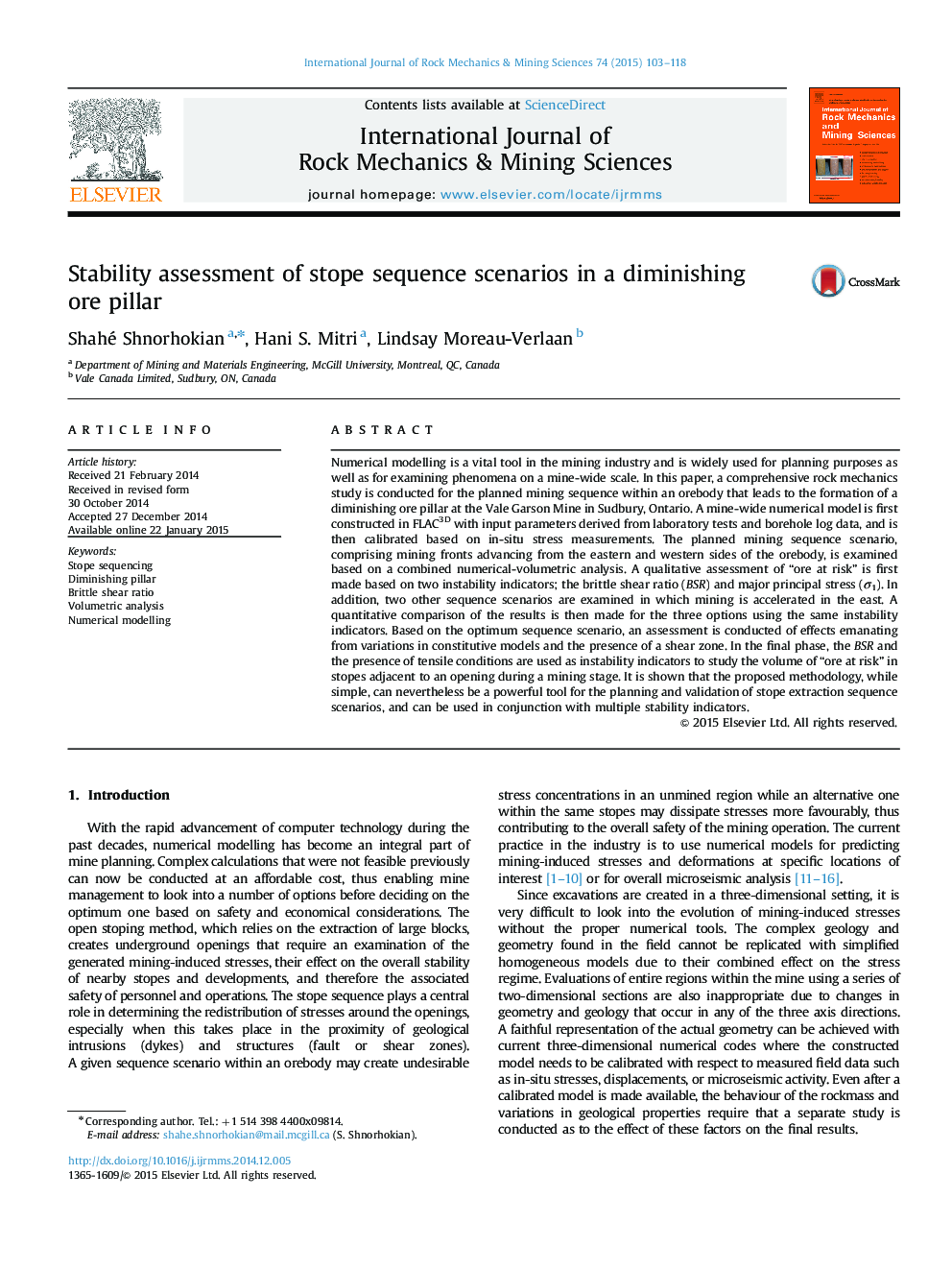| Article ID | Journal | Published Year | Pages | File Type |
|---|---|---|---|---|
| 809576 | International Journal of Rock Mechanics and Mining Sciences | 2015 | 16 Pages |
•A case study of a Canadian underground mine is examined in a FLAC3D numerical model.•A comprehensive rock mechanics study is conducted on the original planned stope sequence.•Results are compared to 2 alternative sequences using the brittle shear ratio (BSR), σ1, and σ3.•BSR, σ1, and σ3 values in the pillar are compared amongst the three options using volumetric analysis.•A new methodology is developed for the assessment of multiple sequence scenarios.
Numerical modelling is a vital tool in the mining industry and is widely used for planning purposes as well as for examining phenomena on a mine-wide scale. In this paper, a comprehensive rock mechanics study is conducted for the planned mining sequence within an orebody that leads to the formation of a diminishing ore pillar at the Vale Garson Mine in Sudbury, Ontario. A mine-wide numerical model is first constructed in FLAC3D with input parameters derived from laboratory tests and borehole log data, and is then calibrated based on in-situ stress measurements. The planned mining sequence scenario, comprising mining fronts advancing from the eastern and western sides of the orebody, is examined based on a combined numerical-volumetric analysis. A qualitative assessment of “ore at risk” is first made based on two instability indicators; the brittle shear ratio (BSR) and major principal stress (σ1). In addition, two other sequence scenarios are examined in which mining is accelerated in the east. A quantitative comparison of the results is then made for the three options using the same instability indicators. Based on the optimum sequence scenario, an assessment is conducted of effects emanating from variations in constitutive models and the presence of a shear zone. In the final phase, the BSR and the presence of tensile conditions are used as instability indicators to study the volume of “ore at risk” in stopes adjacent to an opening during a mining stage. It is shown that the proposed methodology, while simple, can nevertheless be a powerful tool for the planning and validation of stope extraction sequence scenarios, and can be used in conjunction with multiple stability indicators.
